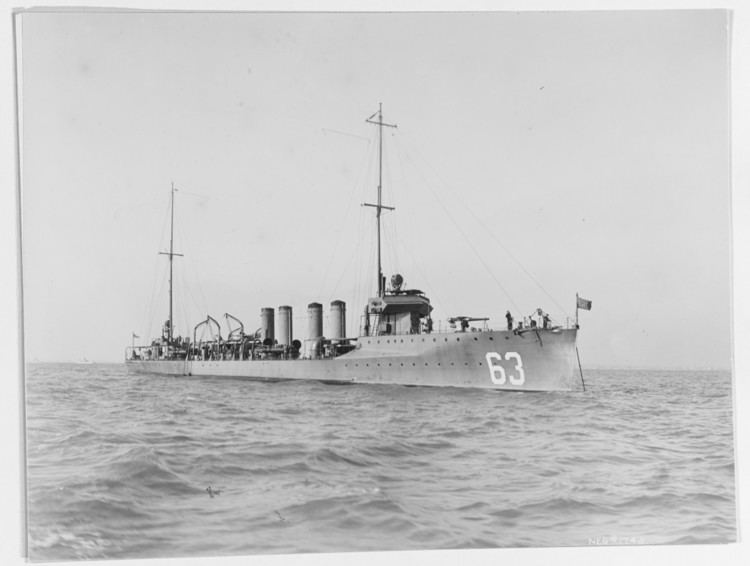Succeeded by Caldwell class In commission 1916–46 | Preceded by Tucker class Built 1915–17 | |
 | ||
Operators | ||
The Sampson-class destroyers served in the United States Navy during World War I. Commissioned in 1916 and 1917, the class was a modification of the O'Brien and Tucker classes, with the number of 21-inch (533 mm) torpedo tubes increased from four twin-mounts to four triple-mounts. The Sampsons were the final six ships of the 26 "thousand tonner" destroyers. They were the largest and most heavily armed of the "thousand tonners", and the subsequent "flush deck" classes differed mainly in hull design and the engineering plant.
Contents
Armament
While the gun armament was typical for destroyers of this period, the torpedo armament of twelve 21-inch torpedo tubes was a significant increase over the preceding Tucker class, replacing four twin mounts with four triple mounts. Both the gun and torpedo armament would remain standard through the mass-production "flush-deck" Wickes and Clemson classes commissioned through 1921. As with the other "thousand tonners", a factor in the size of the torpedo armament was the General Board's decision to use broadside rather than centerline torpedo tubes. This was due to the desire to have some torpedoes remaining after firing a broadside, and problems experienced with centerline mounts on previous classes with torpedoes striking the gunwales of the firing ship. The Mark 8 torpedo was equipped.
This was the first US destroyer class to mount anti-aircraft guns: two 1 pounder (37 mm) autocannons. Anti-submarine (ASW) armament was added during World War I. Typically, a single depth charge track was provided aft, along with a Y-gun depth charge projector.
Engineering
While the main turbines were direct drive, all of the class were fitted with geared cruising turbines as in the preceding Tucker class, on one shaft in Allen, Wilkes and Shaw and on both shafts in the others.
Service
The Sampson class served in World War I as convoy escorts in the Atlantic. Wilkes and Shaw served in the United States Coast Guard as part of the Rum Patrol 1926-34. While the other ships of the Sampson class were retired and scrapped 1934-36 to comply with the London Naval Treaty, Allen survived into the 1940s and served through World War II before being decommissioned and scrapped, the only pre-flush-deck destroyer to serve in that war.
Ships in class
The six ships of the Sampson class were:
